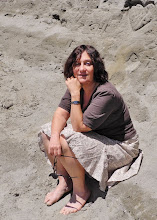Sunday, April 28, 2013
Questions for Violinist Joseph Silverstein
As a foremost American concert violinist, pedagogue, conductor and octogenarian, do you feel optimistic for the future of classical music in our country?
Yes, absolutely! I wouldn't continue to practice the violin and teach at Curtis Institute, Boston Conservatory, and Meadowmount School of Music if I felt otherwise.
What do you make of the current trend of leaving vacancies unfilled in professional orchestras but hiring temporary players instead?
The audition committees are as much the cause of unfilled vacancies as managements of the orchestras. Many highly qualified players who are subs with major orchestras have been rejected by the audition committees that sit right beside them on stage!
As a young violinist growing up in the Boston area during the 60s, I attended many of your solo recitals and concerts while you were concertmaster of Boston Symphony Orchestra. You became my role model early in life. Who was yours?
I have had many role models in life, starting with my father who was a superb teacher and a most sensitive and intellectual person; Joseph Gingold, Mischa Mischakoff and Richard Burgin, my predecessor at Boston Symphony, were all equally influential as violinists and musicians of great dedication. My idols? Heifetz and Kreisler are still important to me and a couple of singers influence my concept of sound: Jussi Björling and John McCormack are two that I listen to frequently.
There were very few women in professional symphony orchestras during my youth. That certainly has changed with women filling the ranks of first chair positions. Which begs the question: In our visually focused and youth oriented culture, do you feel that a person's appearance counts more today?
Since all auditions these days are held behind a screen appearance cannot be too much of a factor in orchestral hiring.
I know you've remarked that the level of orchestra playing has risen exponentially due to higher technical standards of present day instrumentalists. But, do you think that a homogeneity of sound and style have been lost as string sections are comprised of soloist hopefuls with bloated egos?
Yes, the players are better and no, a homogeneous sound is possible when requested by a conductor who has a concept of sound. In the past there were very few conductors who even spoke about homogeneous blend. In my extensive experience, I remember only Stokowski, Barbirolli and Ormandy making requests regarding a blending of sound from the various sections of the orchestra.
A performing artist needs to be at ease with an eclectic variety of music due to shifting tastes, attitudes, and box-office trends. Should traditional teaching be more receptive to crossover repertoire? When I was a kid, anything other than standard literature was frowned upon. Now I'm thinking....should I be teaching "Zelda"?
There is nothing in country or folk fiddling that can't be executed by a violinist who can play a Paganini Caprice with good rhythm, good intonation, dynamic variety and an attractive tone. So much for "Zelda"!
As far back as I remember, even when I watched you on television as a youngster in live performances with B.S.O, you've been blessed with wonderful nerves. What are your thoughts about the prevalent use of beta-blockers for performing artists?
I tell my students to avoid them as they can become dependent on them very easily. Performance anxiety is a real problem that must be dealt with by musicians, athletes, and anyone who must appear in public. I have always been nervous for concerts and I learned how to harness the adrenaline to create more energy in the performance. I work very hard with my students to help them to understand performance anxiety and cope with it effectively.
You mentioned that you practice the violin daily. What is your regimen?
I practice every day and scales are always an element of my routine. A sample rule: a scale that is played without dynamic and rhythmic goals is a waste of time.
You're working on a method book. Tell us about it.
When my little "Fiddlers Handbook" is finished (hopefully in September) I will certainly send you a copy. It won't be more than twenty-five pages in length as everything worthwhile that I have to say can be easily contained in a pamphlet including a few photos for position and some musical examples. Good riddance to thick method books!

